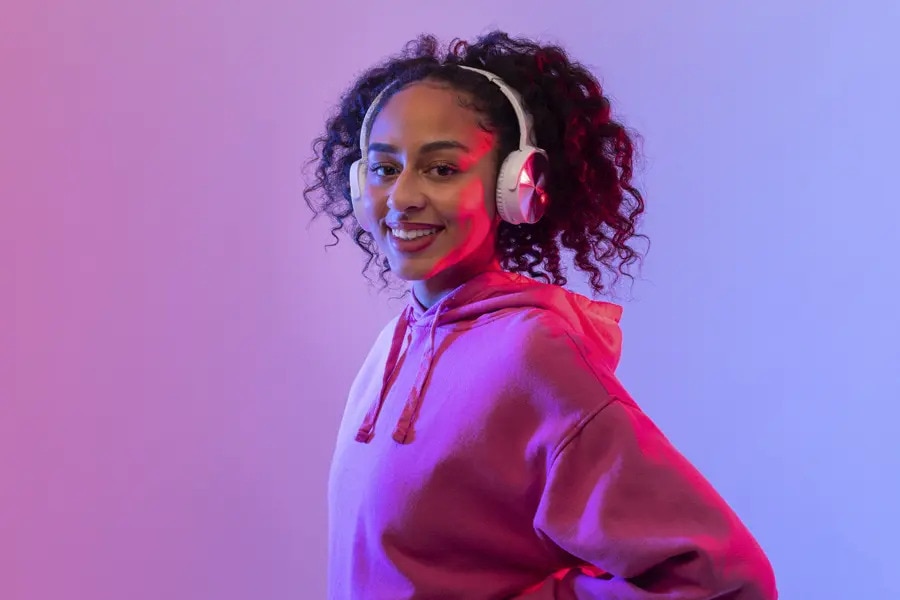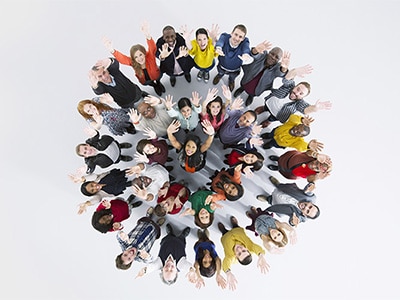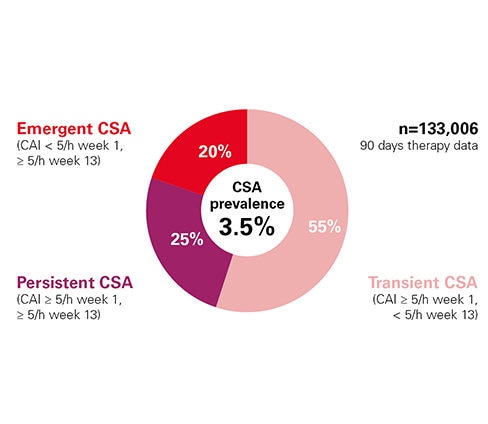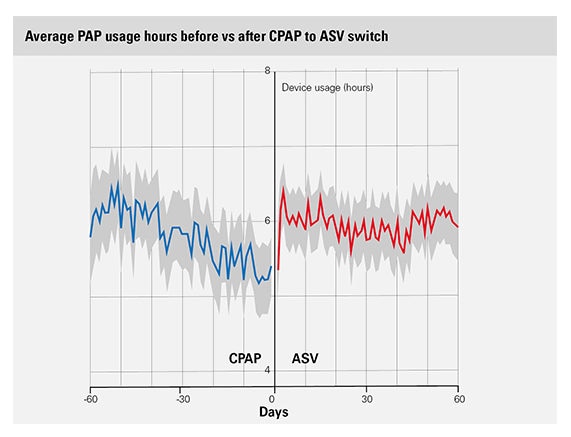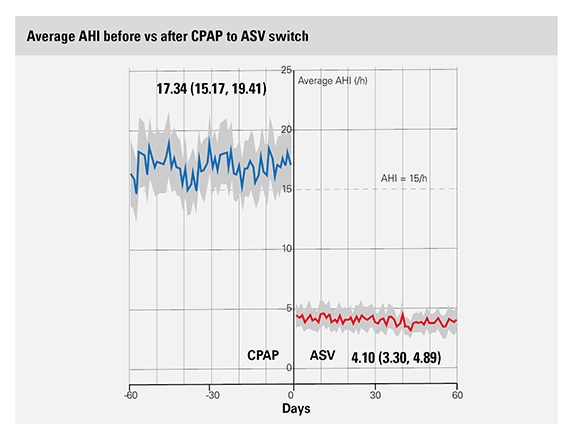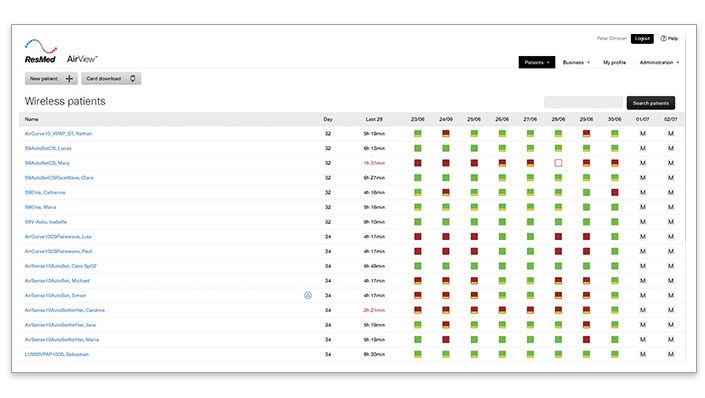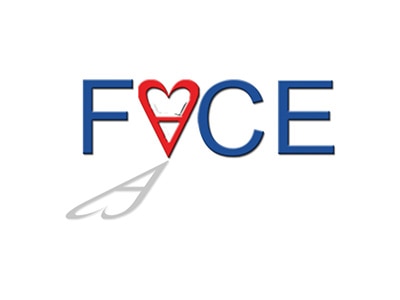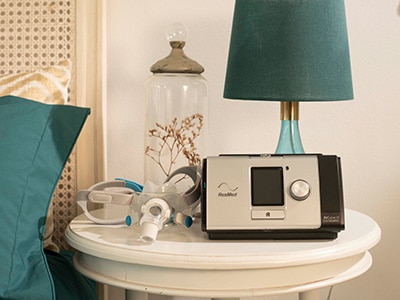Central sleep apnoea during CPAP therapy
First insights from a big data analysis.
Big data is a promising and innovative way to explore questions of clinical relevance, identify disease patterns and characteristics, and generate hypotheses in healthcare. A tremendous amount of data is now available -and growing exponentially- from a number of sources, including telemonitored medical devices that are connected to databases and provide information on device performance and patient status. Analysis of such data may provide new insights and support new approaches to healthcare management.

In a cutting-edge analysis, real-world, de-identified data were used to characterise central sleep apnoea (CSA) during continuous positive airway pressure (CPAP) therapy of US telemonitored patients. The analysis was able to identify 3 categories of CSA during CPAP therapy, all of which negatively affected CPAP therapy compliance and increased therapy termination risk.1
A second analysis, performed on the same database, found that switching patients with persistent or emergent CSA from CPAP to ASV therapy* may improve compliance and could thus potentially improve patient outcomes.2
Implications for clinical practice
Identify residual CSA with ResScan
The statistical data of ResScan provide the AHI, AI, CAI, Hypopnea Index (HI) and Oxygen Desaturation Index (ODI) (if used with an oximeter), which allows you to identify residual CSA and Cheyne-Stokes respiration (CSR) during CPAP therapy.

Implications for clinical practice
- Log into ResScan
- Go to patient record
- Go to “Settings”
- Check that your patient is on CPAP/APAP therapy by looking at the Therapy mode
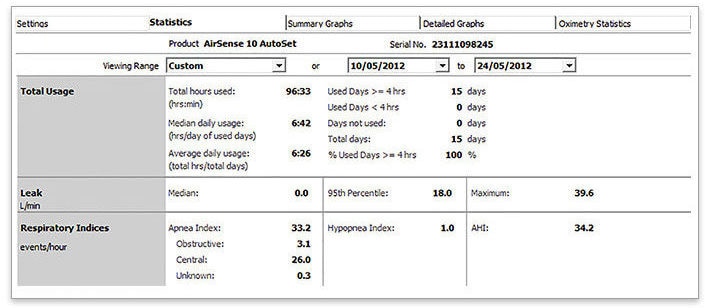
- Go to “Statistics”
- Select the last 2 weeks
- Look at AHI & AI to see if: AHI ≥ 15/h, AI > 5/h or CAI > 5/h
Identify residual CSA with AirView
2. Go to the patients tab and then click on wireless selection to access the wireless dashboard
3. Look at your patients on CPAP/APAP therapy
4. Look at patients with these icons
5. Click on the square indicating a too high AHI to see detailed data

- Look at AHI to see if AHI ≥ 15/h
- Click on the patient
- Go to “Create report” and select “Compliance & Therapy report”
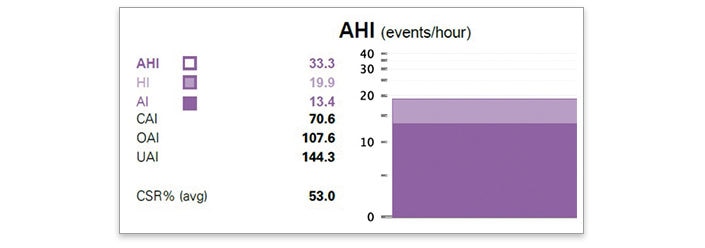
- Go through the report and look for CAI to see if CAI > 5/h
Support for investigator initiated research
Resmed believes in the need to support ethical, independent clinical research, conducted by qualified third-party investigators.
References:
*ASV therapy is contraindicated in patients with chronic, symptomatic heart failure (NYHA 2-4) with reduced left ventricular ejection fraction (LVEF ≤ 45%) and moderate to severe predominant central sleep apnoea.
- Liu et al. Trajectories of Emergent Central Sleep Apnea During CPAP therapy. Chest. 2017;152(4):751-60.
- Pépin et al. Adherence to Positive Airway Therapy After Switching From CPAP to ASV: A Big Data Analysis. J Clin Sleep Med. 2018 Jan 15;14(1):57-63. doi: 10.5664/jcsm.6880.
